This two-storey corner building was rebuilt in the early 20th century. Its predecessor is shown on an advert printed in 1898, with a hanging sign for the Crown and a large clock on the façade of the adjoining property. During the 19th century, the Crown was one of the town’s three ‘principal inns’ and also a ‘posting house’. It is listed in the Universal British Directory of 1793–8, when George Savage was the innkeeper.
Text about the railway viaduct.
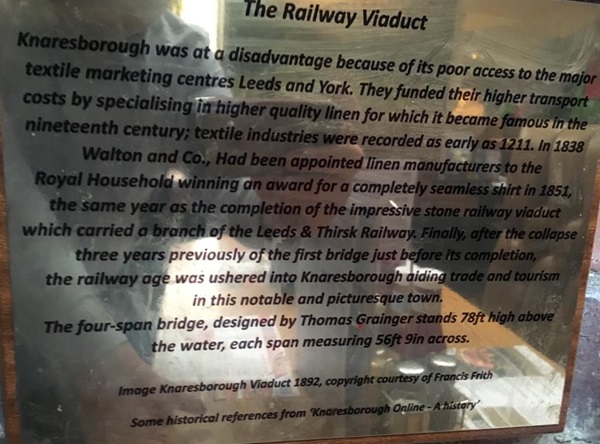
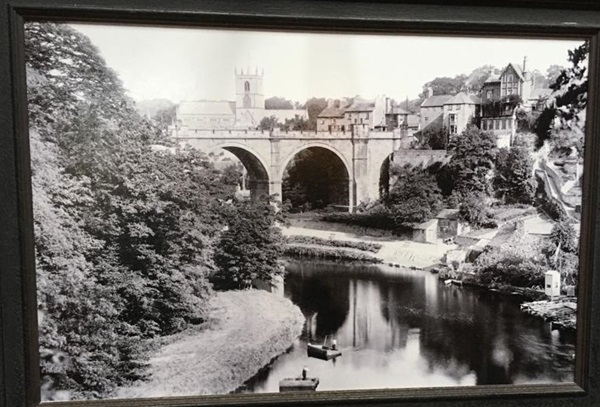
The text reads: Knaresborough was at a disadvantage because of its poor access to the major textile marketing centres Leeds and York. They funded their higher transport costs by specialising in higher quality linen for which it became famous in the nineteenth century; textile industries were recorded as early as 1211. In 1838 Walton and Co., had been appointed linen manufacturers to the Royal Household winning an award for a completely seamless shirt in 1851, the same year as the completion of the impressive stone railway viaduct which carried a branch of the Leeds & Thirsk Railway. Finally, after the collapse three years previously of the first bridge just before its completion, the railway age was ushered into Knaresborough aiding trade and tourism in this notable and picturesque town.
The four-span bridge, designed by Thomas Grainger stands 78ft high above the water, each span measuring 56ft 9in across.
Some historical references from Knaresborough Online – A history.
Text about Mother Shipton’s Cave.
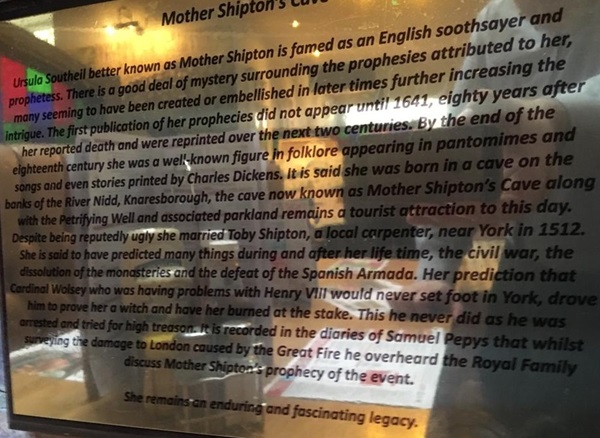
The text reads: Ursula Southell better known as Mother Shipton is famed as an English soothsayer and prophetess. There is a good deal of mystery surrounding the prophesies attributed to her, many seeming to have been created or embellished in later times further increasing the intrigue. The first publication of her prophecies did not appear until 1641, eighty years after her reported death and were reprinted over the next two centuries. By the end of the eighteenth century she was well-known figure in folklore appearing in pantomimes and songs and even stories printed by Charles Dickens. It is said she was born in a cave on the banks of the River Nidd, Knaresborough, the cave now known as Mother Shipton’s Cave along with the Petrifying Well and associated parkland remain a tourist attraction to this day. Despite being reputedly ugly she married Toby Shipton, a local carpenter, near York in 1512. She is said to have predicted many things and after her life time, the civil war, the dissolution of the monasteries and the defeat of the Spanish Armada Her prediction that Cardinal Wolsey who was having problems with Henry VIII would never set foot in York, drove him to prove her a witch and have her burned at the stake. This he never did as he was arrested and tried for high treason. It is recorded in the diaries of Samuel Pepys that whilst surveying the damage to London caused by the Great Fire he overheard the Royal Family discuss Mother Shipton’s prophecy of the event.
She remains an enduring and fascinating legacy.
A photograph and text about Knaresborough Castle.
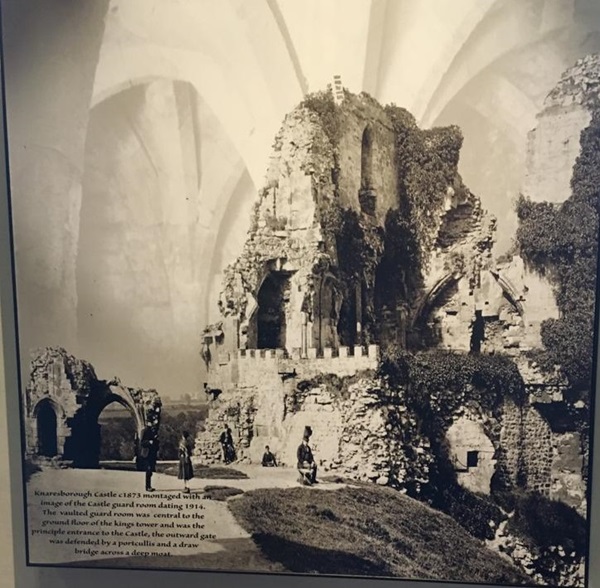
Knaresborough Castle 1873 montaged with an image of the Castle guard room dating 1914. The vaulted guard room was central to the ground floor of the King’s Tower and was the principle entrance to the Castle, the outward gate was defended by a portcullis and a draw bridge across a deep moat.
Text about the Honour of Knaresborough.
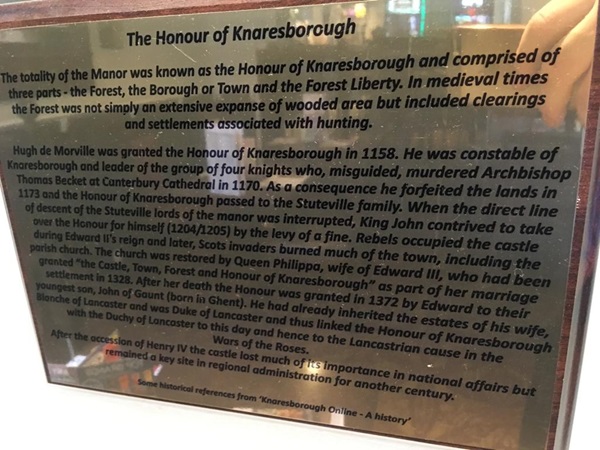
The text reads: The totality of the Manor was known as the Honour of Knaresborough and comprised of three parts – the Forest, the Borough or Town and the Forest Liberty. In medieval times the Forest was not simply an extensive expanse of wooded area but included clearings and settlements associated with hunting.
Hugh de Morville was granted the Honour of Knaresborough in 1158. He was constable of Knaresborough and leader of the group of four knights who, misguided, murdered Archbishop Thomas Becket at Canterbury Cathedral in 1170. As a consequence, he forfeited the lands in 1173 and the Honour of Knaresborough passed to the Stuteville family. When the direct line of descent of the Stuteville lords of the manor was interrupted, King John contrived to take over the Honour for himself (1204/1205) by the lev of a fine. Rebels occupied the castle during Edward II’s reign and later, Scots invaders burned much of the town, including the parish church. The church was restored by Queen Philippa, wife of Edward III, who had been granted “the Castle, Town, Forest and Honour of Knaresborough” as part of her marriage settlement in 1328. After her death the Honour was granted in 1372 by Edward to their youngest son, John of Gaunt (born in Ghent). He had already inherited the estates of his wife, Blanche of Lancaster and was Duke of Lancaster and thus linked the Honour of Knaresborough with the Duchy of Lancaster to this day and hence to the Lancastrian cause in the Wars of the Roses.
After the accession of Henry IV, the castle lost much of its importance in national affairs but remained a key site in regional administration for another century.
External photograph of the building – main entrance.
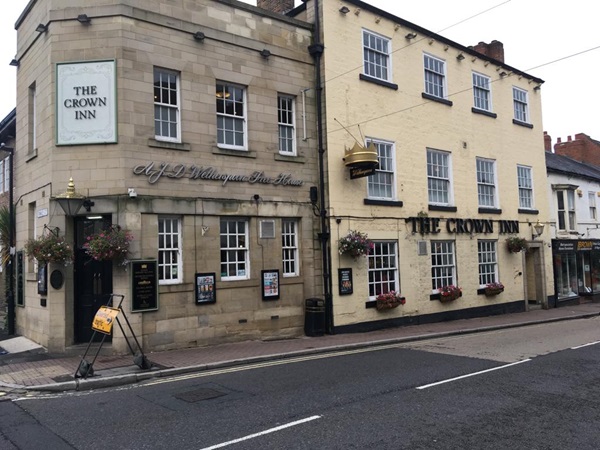
If you have information on the history of this pub, then we’d like you to share it with us. Please e-mail all information to: pubhistories@jdwetherspoon.co.uk